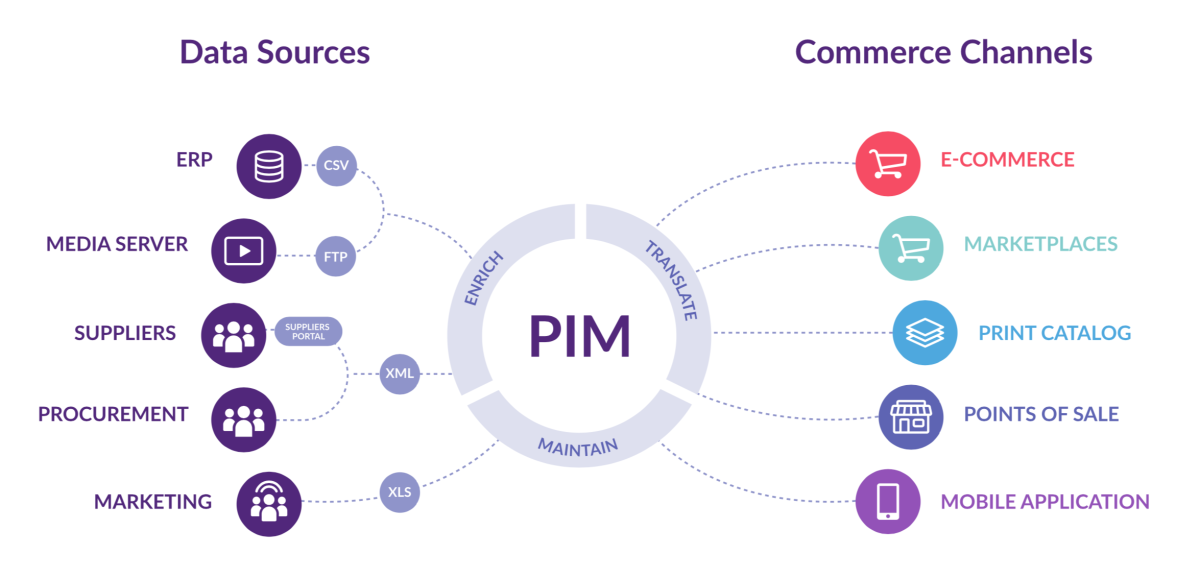Product Information Management (PIM) offers numerous benefits for organizations looking to manage and distribute their product data effectively. Here are some key advantages of implementing a PIM system:
Centralized Data Management: PIM provides a centralized repository for all product information, making it easier to access, update, and maintain data in one place.
Improved Data Accuracy: PIM systems enforce data consistency, reducing the risk of errors and inaccuracies in product information across various channels.
Enhanced Data Quality: PIM solutions often include tools for data validation and cleansing, ensuring that product data is of high quality and completeness.
Efficient Data Enrichment: PIM allows organizations to enrich product data with additional information, such as images, videos, technical specifications, and marketing content, making product listings more attractive and informative.
Multichannel Distribution: PIM systems enable seamless distribution of product data to multiple sales channels, including websites, mobile apps, social media, marketplaces, and print catalogs.
Faster Time-to-Market: Streamlined data management processes help organizations bring new products to market more quickly and respond rapidly to market changes and trends.
Consistent Branding: PIM ensures that branding elements, messaging, and product information remain consistent across all customer touchpoints, reinforcing brand identity and trust.
Scalability: PIM systems are scalable, allowing businesses to accommodate growing product catalogs and expanding sales channels without significant disruptions.
Reduced Data Redundancy: With a central repository, organizations can eliminate duplicate efforts and reduce redundant data entry, saving time and resources.
Data Version Control: PIM systems often include version control features, ensuring that users are working with the most up-to-date product information.
Easier Regulatory Compliance: PIM can help organizations meet regulatory requirements by ensuring that product data is accurate and compliant with relevant standards, such as labeling laws.
Enhanced Customer Experience: High-quality product information, including detailed descriptions and images, leads to a better customer experience, resulting in increased trust and customer satisfaction.
Analytics and Insights: Many PIM systems offer analytics tools that provide insights into how product data is performing across different channels, helping organizations make data-driven decisions.
Cost Savings: By reducing errors, eliminating data redundancies, and improving efficiency, PIM can lead to cost savings in data management and maintenance.
Competitive Advantage: Organizations with well-managed product data can respond more quickly to market changes, outperform competitors, and capture market share.
Global Expansion: PIM systems support localization and translation, making it easier to expand into international markets and serve customers in different languages.
Integration Capabilities: PIM solutions can integrate with other enterprise systems, such as ERP (Enterprise Resource Planning) and CRM (Customer Relationship Management) systems, to ensure seamless data flow and consistency.
In summary, Product Information Management offers a wide range of benefits, from improving data quality and accuracy to enhancing customer experiences and increasing operational efficiency. Implementing a PIM system can significantly contribute to an organization’s success in today’s competitive business landscape.

